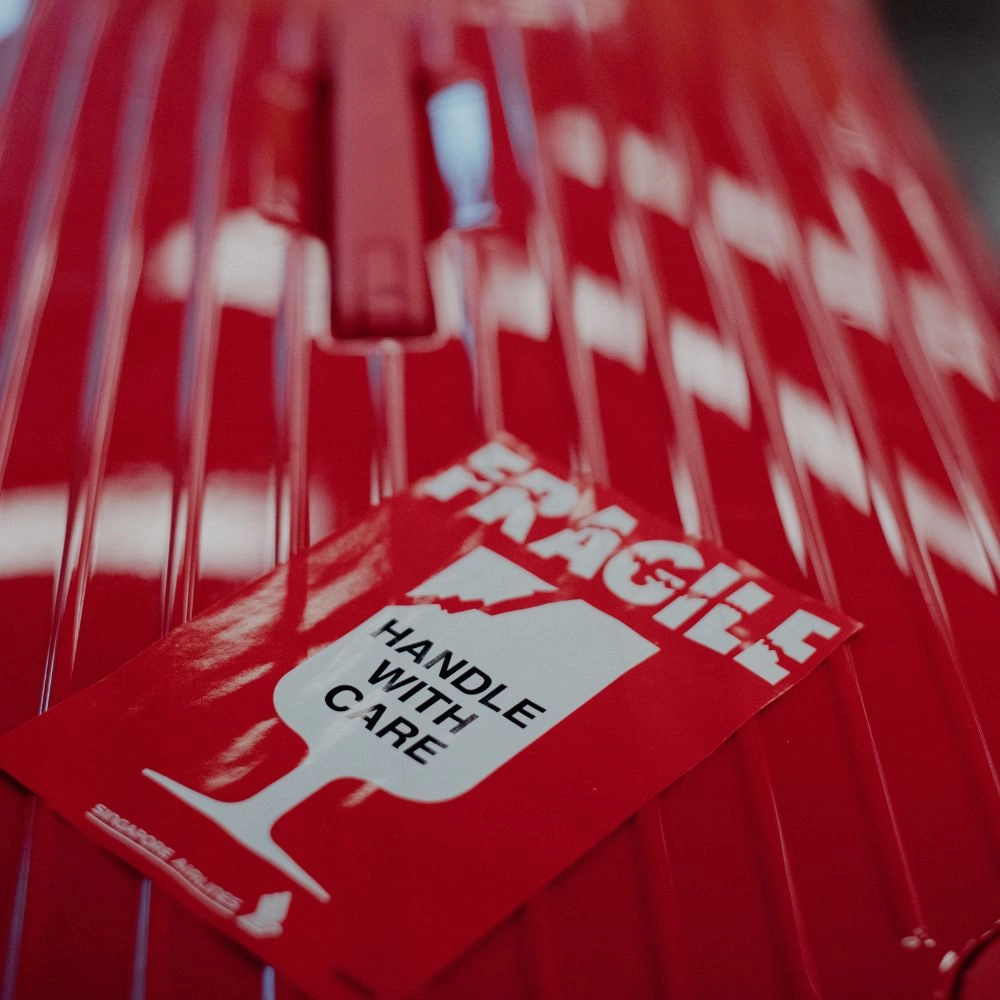The importance of a luggage tag
Here are the benefits.
If you’re traveling abroad for an extended period or like to bring a lot of belongings with you, chances are you’ll be traveling with checked baggage. In this case, you’ll need to check your suitcase at the check-in counter at the airport and be temporarily separated from it until, in most cases, you’re reunited upon arrival. However, there’s still a chance that your luggage may get lost. In such cases, a luggage tag can be very handy. But is a luggage tag mandatory, and what information should you include on it?

Is a luggage tag mandatory?
No, having a luggage tag is not mandatory. However, a luggage tag can be very useful. With a luggage tag, you can easily be contacted in case your luggage goes missing. It also happens sometimes that a fellow passenger accidentally takes your luggage and only realizes it after returning home or arriving at the hotel. With a luggage tag that includes your contact information, you can be easily reached in such situations. Another advantage of having a luggage tag is that it makes your suitcase more identifiable. This way, you can quickly spot it on the baggage carousel and reduce the chances of someone else mistakenly taking your luggage.
How can my luggage be traced if I don’t have a luggage tag?
During the check-in process, the airline’s ground staff will attach a baggage label to your suitcase. This baggage tag is affixed to the handle of the suitcase and can be considered as a type of luggage tag. You also often receive a sticker on your passport that contains the same code as the label. In principle, this label is sufficient to track your luggage if it goes missing. However, there are occasions when this label may tear. In such cases, an additional personal luggage tag can be very handy.
Luggage tag tips
Having a luggage tag brings many advantages, but there are also considerations to keep in mind. It’s wise to be aware that the information you put on your luggage tag is visible to everyone. Therefore, it’s recommended to include only your name and phone number and not your address. After all, you don’t want a stranger to know that nobody is home at that address.
If you don’t have a luggage tag but still want to provide additional contact information, place your business card inside your suitcase. If the airline cannot determine the owner of the suitcase from the outside, they will open it. This way, you can still be easily contacted if your luggage goes missing. Don’t have a business card? A small piece of paper with your contact information is a good alternative.
There are also digital luggage tags available nowadays. With a digital luggage tag, you can enter your information through an app. If your luggage goes missing, the finder can easily scan the QR code on the tag and see where the suitcase needs to go and how they can reach you.
Attaching a luggage tag to your carry-on baggage
Attaching a luggage tag to your carry-on suitcase may not seem logical since you’ll have your carry-on with you throughout the journey. However, there may be unexpected situations where your carry-on bag needs to be transported in the cargo hold. In such cases, it can be helpful to have a luggage tag on your carry-on as well.
Tracking your luggage with an AirTag or tile tracker
If you want to ensure that you can always track down your luggage, it’s useful to invest in a tracker. You can use an AirTag or tile tracker for this purpose. These are digital trackers that work based on Bluetooth. You place this tracker in your luggage, and if your luggage gets lost, you can precisely determine its location thanks to this tracker.
Do you want to avoid the risk of losing your luggage? Let us ship your luggage!
Bereken jouw tarief
















